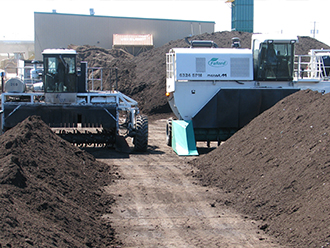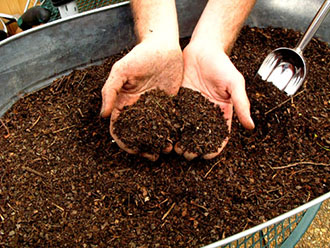Green Waste Composting
Green waste is received at the Material Recovery Facility from the curbside yard and garden program, individuals, landscapers and the agricultural community. The green waste is cleaned to remove trash, debris and animal waste.
After cleaning, the green waste is ground up for composting.
After grinding, the material is formed into windrows. The composting occurs naturally as long as proper levels of moisture and aeration are maintained. The windrows “cook” for six to eight weeks until microbial action has converted the cellulose into compost.
The mist rising from the windrows is proof that the microbes are doing their job. Windrows are typically 140 to 150 degrees Fahrenheit just below the surface and throughout.
Proper aeration is acheived by turning the windrows often. If the oxygen level is not kept up to proper levels, the microbial action may stop and the material may rot.
Once the windrows have completed the composting cycle, the material is screened to remove oversized particles and debris that may have been missed during early cleaning.
Finally, the finished compost is sold to public and private users who mix it with soil completing the
“earth-to-earth” cycle.







